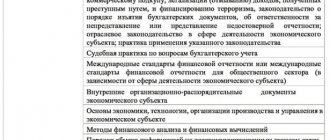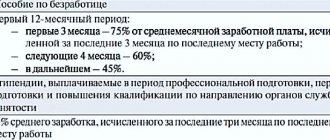Author: Ombm Date: July 19, 2018
The main tool at the first stage of personnel selection is an application for personnel selection. This document clearly defines the specialization of the hired employee, as well as a number of additional requirements that must be taken into account when selecting an applicant. The application is the basis for starting the search for a new employee.
Proceed to create a recruitment application only after official confirmation of the vacancy. To this end, make a list of open vacancies signed by an authorized person. Depending on the structure of the organization, the authorized person may be the general director, HR director, executive director, etc.
In the future, use the recruitment request to create an internal document - a position profile. Include in this document not only the information from the application, but also clarifications received during the search and selection of candidates for the vacancy.
How to collect information about a vacancy
To collect the necessary information about the vacancy, it is recommended:
- study the regulatory documents of the organization, such as job descriptions, regulations on the unit, etc.;
- observe the work of employees in positions similar to the vacant one;
- conduct an interview or survey with the immediate supervisor of the future employee and his colleagues, if any;
- study diaries and work logs in which employees record their main actions and work results, if any.
While observing employees in positions similar to the vacant one, determine the actual functionality, evaluate the amount of work, consider the possibility of optimizing activities and, as a result, draw your own conclusion about the need for an additional vacancy. Perhaps a new employee is not needed; it is enough to improve work processes or change equipment.
If the vacant position is not new and a position profile has been previously developed for it, then use it as the basis for filling out the application. In this case, first find out the changes that have occurred since the creation of the profile.
https://youtu.be/ggKETAMM7eM
Recommendations for staff working with visitors
- Service must be carried out exclusively by appointment, maintaining a time interval of at least 20 minutes between visitors to avoid contact between them.
- Waiting for visitors to be served inside a beauty salon or hairdresser must be eliminated. If there is an unexpected accumulation of queues, waiting outside must be organized in compliance with the principle of social distancing.
- Services for each visitor must be provided in a separate room.
- The work of employees should be organized in shifts, with restrictions on their movement during lunch breaks and during rest outside the territory of the beauty salon.
- Social distancing guidelines for workers and visitors must be observed (including through markings to maintain a distance of 1.5 meters).
In theory, these recommendations should protect visitors and employees of the organization from the threat of infection, but in practice the question arises of the physical possibility of their implementation.
What sections to include in a recruitment application?
There is no unified application form for personnel selection, so each organization draws it up in any form.
At the same time, in practice, certain recommendations have emerged for the preparation of this document, the purpose of which is to include in the application all the questions that will take into account the characteristics of a specific vacancy and the organization as a whole.
In particular, it is recommended to include the following sections in the application:
- title of the vacant position;
- purpose, functionality and tasks of the position;
- requirements for work experience (professional skills) of the applicant;
- skills, knowledge and skills of the applicant;
- the candidate's level of education;
- gender and age of the applicant;
- physical condition, health of the applicant;
- personal qualities of the applicant;
- working conditions, remuneration procedures and job prospects;
- criteria for passing a probationary period for a new employee;
- other information.
Attention: when developing a recruitment application, comply with the requirements of the law prohibiting discrimination in the world of work. When a vacancy announcement contains discriminatory restrictions, the organization and its officials may be brought to administrative liability (Article 13.11.1 of the Code of Administrative Offenses of the Russian Federation). Therefore, parameters such as age, gender, nationality and others can certainly be developed to take into account the employer’s requirements for candidates, but they must have an unspoken status. It is impossible to publish these parameters in an advertisement for a vacant vacancy and record them in an application for personnel selection, especially if the application is an annex to an agreement for the provision of recruitment services with a recruitment agency.
What is discrimination in the world of work?
None of the employees can be limited in labor rights and freedoms or receive any advantages depending on gender, race, skin color, nationality, language, origin, property, family, social and official status, age, place of residence, relationship religion, political beliefs, membership or non-membership in public associations, as well as other circumstances not related to the employee’s business qualities.
In case of discrimination in the world of work, an employee has the right to apply to the court for restoration of violated rights, compensation for material and moral damage.
This follows from the provisions of Article 3 of the Labor Code of the Russian Federation.
How to indicate the position of a vacant vacancy in a recruitment application
First of all, clarify the name of the position and the structural unit in which the vacancy is open. Check whether this vacancy is included in the staffing table and whether it is named as such in the job description. If there is no vacant position in the staffing table or it corresponds to a different name, then make the necessary changes to the staffing table.
A situation is possible when a staffing vacancy is not widespread in society and is difficult to understand the job responsibilities. In this case, indicate two job titles in your application: the actual one according to the staffing table and a duplicate one that is easier and more understandable for potential applicants.
Use the second name when posting job advertisements in the media or on job sites. For example, in the staffing table the vacant position is listed as “junior cleaning manager”; its functionality corresponds to the position of a cleaner. In the application for selection, two names should be reflected, and when posting a vacancy advertisement, for a greater response, indicate “room cleaner.”
Modern requirements for personnel
Sokolova Alina Viktorovna, student of the Lipetsk branch of the Russian Academy of National Economy and Public Administration under the President of the Russian Federation, Lipetsk [email protected] Modern requirements for personnel
Abstract: The article is devoted to issues related to employee behavior and the requirements that he must meet. As a rule, each job has its own rules of conduct, which may differ not only in different industries, but also within enterprises and firms of the same industry. But despite this, in the labor market today there are basic requirements that are presented to every employee, without exception. Key words: requirements for personnel, personnel abilities, personal qualities of personnel, labor potential of the employee.
In conditions of market transformations, when the main attention of management is focused on increasing profitability and the technical level of production, improving the quality and uniqueness of goods and services, the importance of a creative attitude to work and the level of professionalism increases. Only a well-chosen team capable of realizing, understanding and implementing the plans of the enterprise management can ensure the success of the business. This brings attention to the basic requirements that must be put forward to modern candidates for work in large companies that operate in international markets. In the Russian market, many employers, when choosing personnel, look only at a person’s education and work experience, without taking into account the person’s personal qualities and without giving him any chance to prove himself. This approach is not the most effective. Experts note that in successful international companies, 7 out of 10 managers have an MBA degree and a rich resume, but this does not mean that employees need to be selected only according to these criteria. An important thing for a person who wants to work in a company is the ability to properly build relationships with their management, with colleagues in the team (team). Otherwise, you won’t be able to accurately understand your role, what exactly is required, and problems may arise in correctly performing tasks, understanding the laws of the global market economy and the company’s place in it, flexibility in decision-making, and when responding to rapid changes in market conditions. Also, for a modern specialist, it is very important to be able to act in an internal competitive environment and prove one’s advantages, otherwise the employee will not be able to achieve success [1]. Personnel requirements are the characteristics that an “ideal” employee should have in a certain workplace or in a certain position . Requirements for personnel are included in job descriptions, qualification cards, competency cards and other documents. Qualitative characteristics of personnel are a set of professional, moral and personal properties that are a specific expression of the personnel’s compliance with the requirements for a position or workplace [2]. three main groups of qualitative characteristics: abilities, motivations and properties of personnel. Personnel abilities are a group of qualitative characteristics of personnel and requirements for a position or workplace. This group of characteristics includes: 1) Level of education and the amount of knowledge acquired; 2) Professional skills and work experience; 3) Skills of cooperation and mutual assistance, etc. Personnel motivations include: 1) Sphere of professional and personal interests; 2) Desire to make a career ; 3) Striving for power; 4) Willingness for additional responsibility and additional loads, etc. Personnel properties include: 1) The ability to perceive a certain level of physical and intellectual stress; 2) The ability to concentrate attention, memory; 3) Other personal properties [3]. The qualification composition of personnel is an indicator of the quality level of the organization’s personnel, determined by the presence and share in the total number of personnel of employee positions and worker professions with specific characteristics. Personal qualities of personnel are individual characteristics employees, including their business qualities and personality traits that are not directly related to their professional activities. Personnel loyalty is a characteristic of personnel that determines their commitment to the organization, approval of its goals, means and methods of achieving them, openness of their work motives to the organization. Personnel mobility - the ability of personnel to change their position in the employment system within the organization [4]. Personnel certification is the establishment of compliance of the qualitative characteristics of personnel with the requirements of domestic and (or) international standards. Labor behavior is a set of actions and actions that reflect the internal attitude of the organization’s personnel to the conditions, content and results of activity. The labor potential of an employee is the totality of a person’s physical and spiritual qualities, which determines the possibility and boundaries of his participation in work, the ability to achieve certain results under given conditions, as well as improve in the process of work [5]. Age; Physical and mental health ;Personal characteristics;General educational and professional training;Ability for professional growth; Attitude to work; Work experience in the specialty; Marital status. The innovative potential of the organization's personnel is the ability of personnel to: 1) Positively critical perception of new information; 2) To increase general and professional knowledge; 3) To put forward new competitive ideas; 4) To find solutions to non-standard problems and new methods for solving traditional problems; 5) To use knowledge for the practical implementation of innovations [6]. Professional duty is a certain self-restraint aimed at achieving professional success and personal fulfillment. Etiquette is an established procedure for behavior in an organization: in production and between employees. So, what is the “portrait” of an ideal employee, according to the employer?: 1) Responsibility. The manager does not need excuses, he needs results. That is why employees are valued for responsibility, the ability to make decisions independently, and to be responsible for their mistakes. Working according to the “my house” principle can lead to someone firing you. The company does not need employees who do not want to be responsible for anything. 2) Hard work. Show diligence and desire to work. All your actions should be as effective as possible and aimed at the development of the company. It is very important to be immersed in work. But don't overdo it: don't forget to have lunch, sleep and rest. 3) Execution. Managers dream that all their orders will be carried out efficiently and effectively. If you also learn to anticipate your boss’s wishes, then in his eyes you will become indispensable. 4) Efficiency. Many managers note that it is the fulfillment of all instructions that promptly serves as the reason for increasing wages and moving up the career ladder. Complete assignments twice as fast as your colleagues, and in a few years you will rise to the rank of department head or deputy director! 5) Competence. Fulfilling all assignments at the highest level, the ability to make decisions independently, and work without constant clarification is the key to success. 6) Determination. Decisiveness is a valuable trait. An employee should not be afraid to take initiative, not give in to difficulties, and achieve their goals. 7)Multitasking. Multitasking refers to the ability to work on several projects at the same time. 8) Interchangeability. In addition to your field of work, master other related professions. You will be known as an indispensable specialist who understands the most complex issues. The main thing is to take on as much work as you can do, no more! 9) Presentability. A well-groomed and neat person evokes sympathy among both the manager and clients. Stick to office dress code, even if the company does not have a strict dress code. 10) Punctuality. Come to work on time, try not to be late, and you shouldn’t leave an hour before the end of work. 11) Conflict. Conflict is also one of the most common reasons for refusal to hire and a reason for dismissal. Who would want to work with an aggressor or just a person prone to swearing at people? It is not difficult to identify such a candidate at the interview stage; in such stressful situations it is much more difficult to control one’s emotions. Somewhere they specially arrange a stress interview, and somewhere the applicant himself begins to be rude and allow himself emotional statements. This “pops up” especially often when a candidate begins to explain the reasons for dismissal or simply speaks about his past employer. There are studies in which a person’s conflict level was correlated with his blood type. Thus, knowing the blood type, one can predict whether a person is prone to conflicts (Fig. 1) [7].
For the first blood group
For the second blood group
For the third blood group
For the fourth blood group
Rice. 1. Correlation of a person’s conflict level with his blood type
Each manager draws a “portrait” of an ideal employee differently; it can be expanded or reduced, depending on the specifics of the organization’s work and the position held. However, in order to interest employees in high-quality work, it is necessary to develop a system of motivation and management. Thus, we can conclude that the employer’s requirements for employees are varied. More often, what matters to an employer is work experience, level and quality of education and personal qualities. The main personal qualities that the employer wants to see in a candidate are versatility, commitment to the profession, learning ability, communication and efficiency. A modern worker needs to be ready to expand his knowledge throughout his life, learn new skills and improve his qualifications. Young people initially have a general idea of what an employer wants them to be, so they have the power to learn how to meet these requirements.
Links to sources 1. Shurupova A.S. Increasing role of knowledge in the economic activity of subjects // Problems of economics and legal practice. 2011. No. 2. P. 218.2. Deineko A.V. Personnel management: textbook. M.: "Dashkov and K", 2020. 45 p3. Kibanov A.Ya. Fundamentals of personnel management: textbook. M.: INFRAM, 2012. 162 p. 4. Zotkina N.S. Economics and sociology of labor. SPb.: Publishing house. St. Petersburg State University of Economics and Economics, 2001. P. 16.5. Shurupova A.S. Strategy for the socio-economic development of the region based on knowledge management // Fundamental Research. 2014. No. 85. P. 11681172.6. Fedorova N.V., Minchenkova O.Yu. Organizational personnel management: a textbook. M.: KNORUS, 2013. 102 p. 7. Requirements for any employee. URL: https://rbg.by/articles/trebovaniyapredyavlyaemyeklyubomurabotniku
How to determine the functionality and tasks of a future employee
To understand the responsibilities and tasks of a future employee, visit his place of work, observe the organization’s specialists who occupy a similar position, study in detail the job description, as well as other documents of the organization that describe the functionality of the vacant position, etc. This information will help to conduct a better job presentation of the position to the applicant and evaluate his experience and knowledge.
Next, determine which job duties he will perform daily, and which ones - occasionally. For example, when drawing up an application for the position of an accountant, it may turn out that the future employee must spend 80–90 percent of his total work on calculating wages and preparing reports to the Pension Fund of the Russian Federation. Unlike his colleagues, who, with the same job title, are engaged in restoring accounting, working with fixed assets, accounting for materials, etc.
When you have determined the main job responsibilities, find out additional functions that the employee must perform from time to time, for example, when replacing colleagues. This approach will allow us to identify basic and additional requirements for experience, skills and knowledge, which will become the main criteria for selecting candidates.
Next, clarify what specific aspects there are in the future employee’s work. For example, if a specialist with knowledge of a foreign language is required, clarify which language knowledge is required, at what level, to perform what kind of work: written, oral, synchronous, using special vocabulary, for example, technical, construction, etc. This information will allow you to specify the requirements and further facilitate the search and assessment of candidates.
Make an analysis of the qualities and skills of the employee who occupied the vacant position, if any. Assess its strengths and weaknesses. This will help form a portrait of the candidate and avoid some mistakes. For example, if it turns out that the tasks for a future employee are not entirely adequate, that is, the expectations from him are clearly too high, or there are not enough resources to complete the tasks: financial, organizational, time, etc., then reconsider the complexity of the tasks and (or) methods their decisions. Next, change the list of functional responsibilities or selection conditions.
To assess the adequacy of candidate requirements, gather additional information about similar job openings online or conduct an analysis of similar positions at other organizations. Next, discuss the collected and statistically processed information about the vacancy with the immediate supervisor of the future employee, and if necessary, make changes to the requirements for the candidate for this position.
When you have compiled a list of the functional responsibilities of the future employee, check the existing job description. If necessary, make current changes to it or approve a new one.
In your application, describe the employee’s functionality in specific and clearly understandable words. Select three or four priorities from your list of responsibilities and use them to create a job advertisement and conduct an initial telephone interview.
How to determine candidate experience requirements
When you have determined the functionality and tasks of the future employee, evaluate what is more important: that the candidate has the necessary experience and skills or certain personal qualities or behavior patterns.
Please note that for positions that require serious knowledge in a specialized field, professional requirements are more important, and for positions where everything depends on personal qualities, and professional knowledge can be quickly acquired in the process of work, personal qualities requirements will take priority.
For example, for a candidate for a leadership position, the first priority is the requirement for management experience, then such qualities as determination, the ability to think strategically, and only then certain behavior patterns. While for the vacancy of an employee who serves people, the most important personal qualities are: communication skills, ability to persuade, activity, then certain behavior patterns: smiling at the client, greeting, offering help, etc., while the requirements for work experience are precisely in this area may be completely absent.
Compose three to five specific questions that will provide an initial idea of the candidates’ professional qualifications. Ask for answers to these questions. This will make the interview easier. Include these questions in your application or in your interview plan. When developing questions, use the basic guidelines for writing applicant assessment questions.
If there are several people conducting the interview, agree with them in advance about the order of interviewing and feedback. If you have little experience working in an organization or are looking for an employee for a complex position for the first time, interview the candidate together with a more experienced specialist in this matter.
How to determine the requirements for a candidate's knowledge and skills
To formulate requirements for the candidate’s knowledge and abilities, answer the following questions:
- What abilities and knowledge are most in demand in the work of a specialist? How often will they be needed and in what situations?
- What knowledge, skills and abilities are critical to success in this position?
- How to check the necessary knowledge and skills of a candidate during an interview?
- What are the applicant's growth prospects in the organization?
- What opportunities exist to train a specialist to improve his professionalism?
There are positions that necessarily require certain knowledge and skills from employees, most often these are positions with high responsibility for the results of their work and their subordinates. But there are also positions that do not require great knowledge and abilities, since this knowledge can be easily and quickly acquired during the work itself, so evaluate how important knowledge and skills are for the open vacancy.
There may be cases when the knowledge that the applicant received in his previous job is not as important as the skills that he acquired during the work. For example, when selecting a customer service specialist, it is important to understand communication technology, presentation and negotiation skills.
When developing requirements for the knowledge and skills of candidates, check whether they are really necessary to solve current problems (managers often overestimate the requirements for future employees). There is a risk that, without the opportunity to apply their talents and experience, the new employee will leave for a more suitable organization with other, more interesting tasks. For example, a sales manager who, in a previous job, negotiated with top officials of large organizations may quickly get bored if in a new place his work is limited to a simple presentation of the product to store customers.
If there are specific requirements for candidates necessary to perform the functionality, be sure to indicate them in the application. For example, the ability to keep a secret - for a chief accountant or personal assistant to an executive, the ability to quickly switch from one task to another - for a project manager.
How to determine a candidate's educational requirements
The presence of a specific education, confirmed by a diploma and (or) certificate, may be a mandatory item in the application for personnel selection. When hiring employees for a management position, as a rule, it is important to have a higher education, which indicates a broader outlook and level of knowledge, while the specific specialty obtained at a university may not be of much importance.
If you think that a higher education is a guarantee of competent communication or great erudition of an employee, discuss in detail with your future employee’s colleagues whether this is so. Perhaps, upon closer examination of the functionality for a vacant vacancy, it will turn out that a person without a higher education can cope with this job. In this case, change the education requirement in the application.
If higher education is a mandatory requirement, find out which universities are best to consider applicants from. Collect statistics, find out which university graduates work most successfully in the organization, what recommendations experts in the field give on this issue, systematize information based on reviews on the Internet.
How to determine the requirements for a candidate’s gender and age
Requirements for the gender and age of a future employee are often formal. Often gender has no effect on the outcome of the work. The exception is cases of heavy and dangerous work, where there is an official ban on hiring women, as well as cases where the psychological climate in the team does not allow an employee of the opposite sex to work productively.
Age restrictions are most often associated with the desire to see in the applicant certain qualities, competencies (Competencies are characteristics of a person’s business and personal qualities, his knowledge, thanks to which high performance in a particular activity is achieved. Competencies shape a person’s behavior and performance), which are attributed to a certain age, for example, ability to learn, activity, presentable appearance, etc. At the same time, such restrictions sometimes interfere with the search for a worthy applicant. It is especially dangerous to exclude specialists of rare professions and bearers of unique experience based on formal criteria.
If you think it is important to limit the age of the applicant, re-evaluate the reason for this. Sometimes it’s just a stereotype in the mind, for example, you can’t imagine that a woman or a man over 50 years old can work in this position. Think about how adequate this opinion is. Strive to remove stereotypes regarding age and gender - this will increase the search area for a worthy candidate. For example, young people without work experience are often sought for the position of courier, but in practice, employees aged 60–70 have proven themselves to be the most successful in this position.
In any case, you should remember: discrimination based on gender and age is prohibited, therefore it is unlawful to openly indicate the age requirements of a candidate in vacancies.
How to determine a candidate's health requirements
If, based on the results of a special assessment, the working conditions at the employee’s workplace are classified as harmful or dangerous, then before starting work, the candidate must undergo a medical examination (Article 213 of the Labor Code of the Russian Federation).
Also keep in mind that if the work schedule in the organization involves night shifts, periodic overtime work and other cases described in labor legislation when such work is prohibited for medical reasons, then the physical condition and health of applicants is also an important factor in the selection.
In such cases, be sure to include in the selection application a section that includes requirements for the candidate’s physical condition and health. Please remember that in cases not established by law, the employer does not have the right to check the health status of an employee before hiring without his consent.
Interview
To check the applicant's compliance with the requirements, an interview is conducted where the employer interviews the applicants. Any wishes (requirements) should be drawn up depending on the proposed position.
They may only require the skills necessary to work in a given workplace. Office workers must be able to use a computer, programmers must understand software, accountants must know 1C. But the employer does not have the right to check how many times a person can sit down, because this has nothing to do with the proposed position.
It is best to create a list of requirements for candidates before the interview begins, so that applicants know exactly what is wanted from them. This list can include the necessary skills, educational level, experience in a particular position, probationary period, etc.
Documents provided by the employee
- Passport or other document that can confirm your identity.
- TIN.
- SNILS.
- A work book upon entry to the main place of work; part-time workers do not provide this document. The Labor Code is not needed for people for whom this position will be the first; in this case, a document form will be created upon acceptance for the position.
- Military records.
- Compulsory medical insurance policy.
If this position requires any professional skills when hiring, then to this list you can add a document on education (higher or other), a certificate of completion of courses (for example, for a hairdresser), a work permit (for example, work at height for installers). But, these documents can only relate to the professionalism of the applicant, and not his views on life or society.
Read on topic: Writing a resume for a job
Employer's documents
- The employer must also provide some documents to his candidate before concluding the contract.
- All available information about labor protection in the organization.
- Rules in force at this enterprise.
- Job description and data relating to the company's divisions.
- Any provisions governing employee remuneration, bonuses, etc.
- Working hours schedule.
- A sample agreement that will be concluded with the consent of the parties.
If an employee at a new workplace will have to work with any documentation that is of a secret nature, then this should also be warned. As well as the fact that he is obliged to sign an agreement on non-disclosure of proprietary information. Tell us about the consequences of violating such agreements and what the disclosure of prohibited data entails.
There is such a thing as medical confidentiality, that is, the attending physician cannot share with anyone the information received from the patient during an appointment or treatment. Even more requirements are imposed on accountants - they cannot share access codes to the company’s finances, since if there is a shortage of funds in the accounts, proceedings will begin, and when the culprit is identified, an agreement on the employee’s full financial responsibility will come into play.
How to determine the requirements for a candidate’s personal qualities
In the section with personal characteristics, indicate the desired character traits of the future employee, his bright sides of personality. At the same time, avoid a formal approach to filling out this section and using typical characteristics: sociable, stress-resistant, goal-oriented, etc.
Indicate in your application only those qualities that are mandatory for a specialist for the vacant position. For example, the presence of leadership qualities is paramount for an applicant for a management position, but for an applicant for the position of an ordinary employee with routine work and the absence of subordinates, the presence of such a quality can only interfere with the work process.
When determining the required qualities for candidates, strive to specify and reveal as fully as possible any characteristic, for example:
- desire to acquire knowledge of related professions;
- level of leadership qualities;
- level of openness in communication;
- general life goals and aspirations;
- general life priorities and values;
- level of internal energy.
Analyze the required characteristics and identify two or three mandatory key qualities for selection in further interviews. Find tools to evaluate them, such as psychological tests.
How to determine and indicate in the application for selection the working conditions for a vacant vacancy
In the terms and conditions section of your application, please include the following information:
- conditions and nature of the employment contract: main job, part-time job, possibility of remote work, its urgency and, if the work is urgent, then its duration;
- working hours: flexible schedule, shift work, irregular working hours, etc.;
- availability of business trips and their frequency;
- salary size and its components: salary, bonuses, allowances, possible average monthly income;
- additional benefits and compensation: voluntary medical insurance, payment for travel to a vacation spot, payment for the cost of food, a subscription to a sports club, etc.
This information will help increase the candidate’s interest in the vacancy during the interview, initially correctly orient him in matters of remuneration and working hours, and also immediately weed out those applicants who have a different idea about working conditions and salary.
How to indicate the criteria for passing the probationary period in the application
The criteria for passing the probationary period for a future employee are set by his immediate supervisor. As a rule, these include:
- completed tasks efficiently and on time;
- mastering corporate standards and norms;
- successful interaction with colleagues.
Why do you need a job description?
Without well-written job descriptions, effective personnel management, resolution of conflicts associated with discrepancies in defining the responsibilities of an employee, and the activities of the organization as a whole are impossible.
After all, the job description is:
- the basis for assessing the employee’s performance, information for conducting a reasonable selection of employees when hiring and assessing the level of suitability of candidates for vacant positions;
- important information for the employee himself: it tells what criteria will be used to evaluate the results of his work and what actions are expected of him, it provides guidelines for increasing the level of education and qualifications of the employee;
- effective organizational methods that help organize the work of the department;
- a document without which, for example, it is impossible to write off the depreciation of a car as an expense, since for this the use of the car must be specified in the job description of the owner of the car or the employee to whom it is temporarily issued for use.
Job descriptions should not just be a tribute to bureaucracy, but a thoughtful and seriously drafted document, then they will be able to fulfill their main functions: to organize work in the organization and help in resolving legal and economic disputes.
What additional information should be included in the recruitment application?
In the section of the application for selection with other information, reflect additional facts that give an advantage to one applicant over others of equal professional qualities, for example:
- having a driver's license and a car;
- marital status, presence of children;
- the ability to travel on business trips (local and foreign), how often;
- ability to do overtime, how often, etc.
Also in this section you can indicate the type of corporate culture, features of internal corporate communication, the stage of development of the organization, a description of the workplace, that is, any information that will help the applicant finally decide whether to apply for the vacancy or not.







